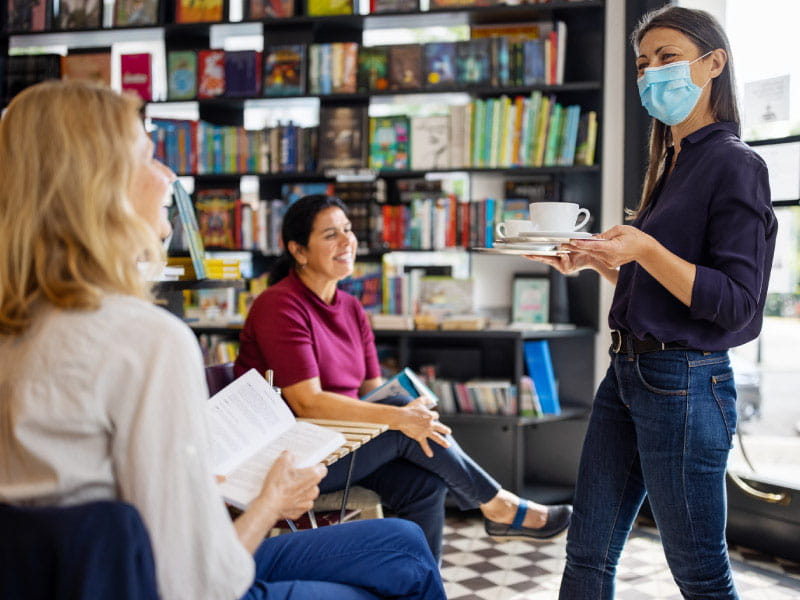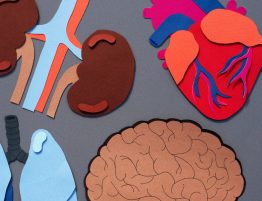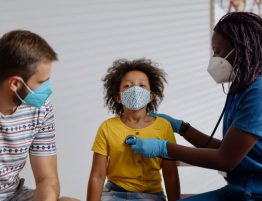
On March 11, 2020, when the World Health Organization declared COVID-19 a pandemic, everyone wanted to know: “What is this disease, and how can we stop it?”
After three years of terrible loss – including more than 1.1 million U.S. deaths, according to the Centers for Disease Control and Prevention – along with remarkable scientific progress, some experts say the question has become, “How do we adapt to a world where that disease is here to stay?”
“It’s really a glass-half-empty, half-full approach, where some people say, ‘Well, you know, COVID is much less morbid than it was two or three years ago, and things are so much better,'” said Dr. Sandeep R. Das, professor of internal medicine in the cardiology division at UT Southwestern Medical Center in Dallas.
At the same time, thousands of people are dying monthly from COVID-19, the disease caused by SARS-CoV-2, a virus that’s still “quite dangerous,” Das said. “So, it’s not something where we can just sort of declare victory and ignore it.”
That two-sided reality means he and other experts agree there is no one-size-fits-all approach to facing the risks.
“We definitely don’t want people to run around terrified,” said Das, co-chair of the American Heart Association’s COVID-19 Cardiovascular Disease Registry. “It’s something that you have to take seriously, and you have to do what you can to mitigate risk.” At the same time, he said, “you have to be able to live your life.”
Dr. Amesh Adalja, a senior scholar at the Johns Hopkins Center for Health Security in Baltimore, agreed that the urgency with which people take protective measures will depend on their individual circumstances.
“It depends on how hard you’re trying to avoid getting a ubiquitous virus,” said Adalja, an infectious disease specialist. And that means advice on common concerns will vary.
Are masks still important?
The CDC says wearing a mask is still considered helpful in preventing exposure to COVID-19 and in helping infected people limit the spread of the disease. In areas with medium to high levels of COVID-19 cases, the CDC “especially recommends considering” masks and social distancing.
Adalja said that people at high risk for developing severe COVID-19 – the CDC’s list includes people with diabetes, heart and lung conditions, weakened immune systems, kidney disease and more – still might want to wear masks in crowded indoor settings.
But for people with lower risk, in a world that now has vaccines to protect against infection and severe illness and antiviral drugs for treatment, he considers masks just “one tool that people can use.”
Dr. Nicole Bhave, an associate professor at the University of Michigan in Ann Arbor, said that for older and sicker people, “masking is really important.” But she also tailors her advice to individual patients.
Bhave, a cardiologist who sees many patients who are on dialysis or have had kidney or liver transplants, said that for such patients, “I strongly recommend mask-wearing, particularly in crowded public settings. For young, healthy people, I actually do not routinely recommend that,” especially if they are up to date on vaccinations.
Das said that studies about masking “are all over the place.” But he and other physicians wear masks regularly at work, he said, and it’s not a problem.
“It’s such a small ask, in most contexts,” he said.
Who needs a COVID-19 vaccine?
The CDC says everyone as young as 6 months should receive an updated, or bivalent, booster, which protects against both the original virus and more recent variants.
The issue is not whether vaccines work, Adalja said. “I think vaccines are extremely valuable at minimizing the impacts of COVID-19.” According to CDC data from December, hospitalization rates for unvaccinated adults were 16 times higher than those who had received the updated booster, which became available in September.
“If you’re somebody that’s high risk, the vaccine could literally mean the difference between life or death,” Adalja said.
As of early March, the CDC reported that while 81% of people in the U.S. had received at least one dose of a vaccine, only 16% had received the updated bivalent booster.
“I still would advise everyone to have the boosters on the schedule that the CDC recommends,” said Bhave, who helped write American College of Cardiology guidance on post-COVID-19 issues. “But for a younger, healthier person, that may be less critical,” given how most people around them either have been vaccinated or have some immunity from having had the disease.
Das said getting vaccinated and boosted remains the No. 1 thing someone can do to protect themselves.
So if the question is, “‘Should a 90-year-old in the nursing home get vaccinated?’ Of course, 100%, that should be not one bit controversial,” he said. “Should a 20-year-old who’s super healthy get vaccinated? That’s an individual decision. Obviously, the absolute benefit to that person is much smaller. But they could still decide to do it.” For example, staying up to date with COVID-19 vaccines means a young, healthy person is less likely to spread the disease to at-risk people they live or work with or encounter in everyday life.
What are COVID-19’s risks to the heart?
Early in the pandemic, Das said, doctors were fearful the coronavirus might directly cause heart problems. “That has largely turned out not to be the case,” he said.
But in the throes of an infection, people still struggle, Bhave said, and are at increased risk for heart attacks, atrial fibrillation (a type of irregular heartbeat) and more.
The stress from a COVID-19 infection might be exposing previously unknown heart problems, Bhave said. And longer-term studies have shown COVID-19 survivors to be at higher risk of problems such as stroke and heart failure.
“I think we do have more to learn about all the mechanisms,” she said.
Among the lingering questions are those surrounding long COVID, Das said. “We absolutely, desperately need more research into the long-term implications.”
Co-existing with the coronavirus
COVID-19 is here to stay, Adalja emphasized.
“We’re talking about the three-year anniversary,” he said. “At the 30-year anniversary, COVID-19 will still be a threat.” The coronavirus will continue to evolve, and new variants are simply a biological fact.
But Adalja celebrates how far science has come, so fast. Before 2020, “COVID-19 and the virus that causes it were not known to science. And now, three years later, we probably have more tools to deal with COVID-19 than we do for any other respiratory virus.”
Adalja said he’s optimistic “in the sense that humans have tackled the most pressing problem with COVID-19, which is being able to reduce its ability to cause severe disease and death and crush hospitals.”
But for individuals, “the way you deal with COVID-19 is very personalized, based on your risk factors for severe disease and your personal risk tolerance.”
Das also celebrates the scientific successes and agrees that people need to find the balance that works for their situation.
“I definitely think people need to not be terrified,” he said. “That said, if you have a lot of cardiovascular comorbidities, it’s not a trivial thing to get COVID. People are writing it off as, ‘Oh, it’s just the flu.’ But the flu kills people.”
After three years, people may want to move on from thinking about COVID-19, Das said. “The problem is that really, we’re not on our own timeline,” he said. “We are, to some extent, on the virus’ timeline.”





